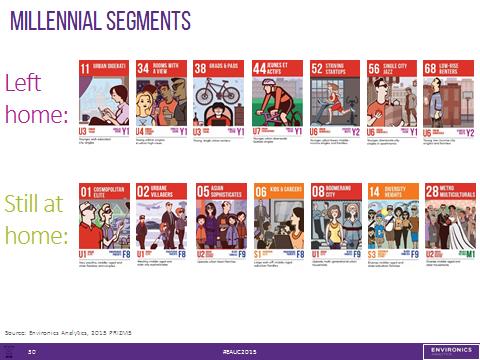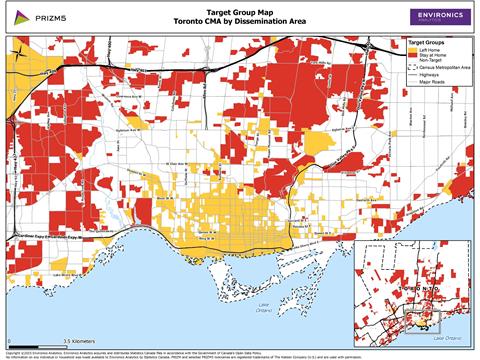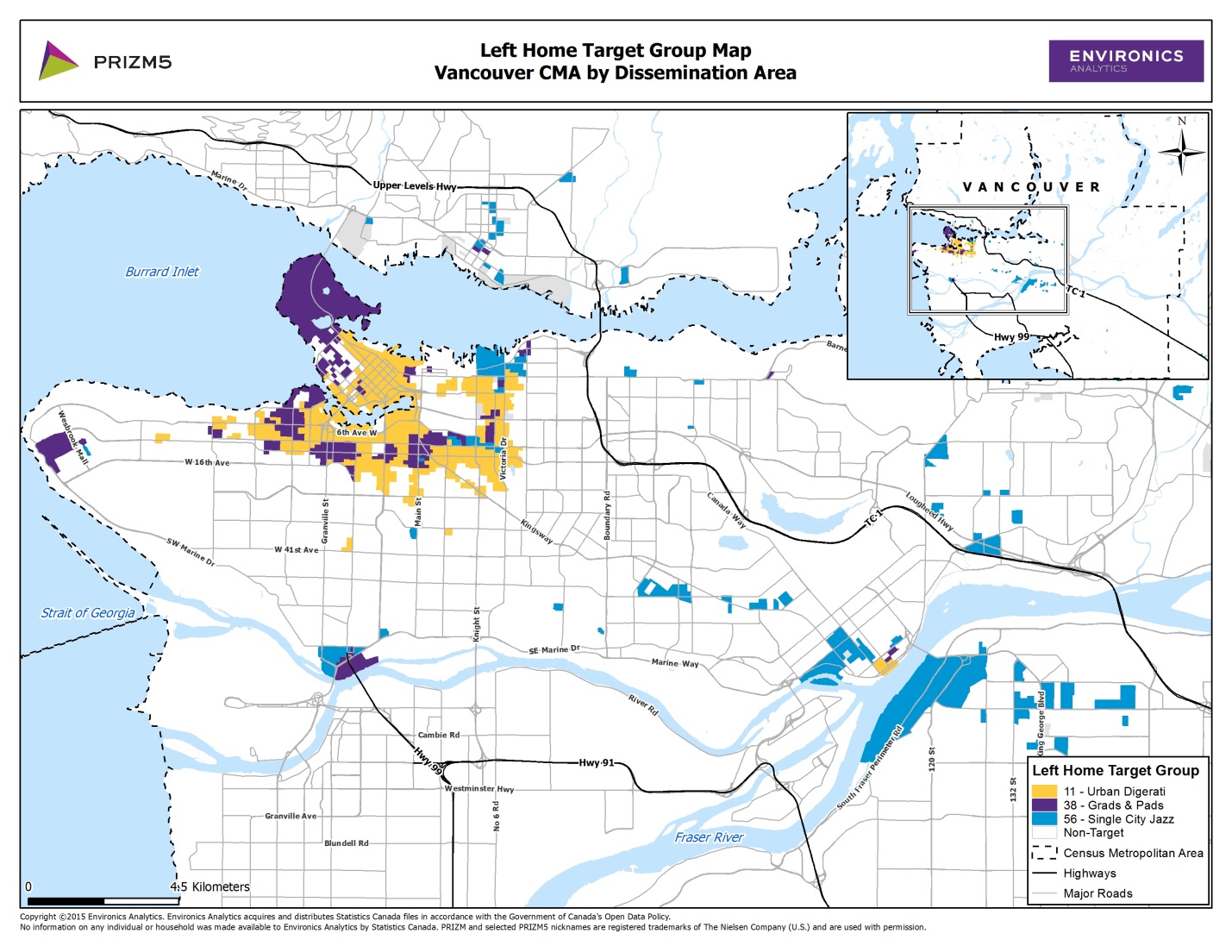
The Diversity Of Millennials
In an earlier blog I discussed the characteristics of the Millennial generation and how it is different from other generations—in terms of demographics, lifestyles and social values. Although it is important to recognize these generational differences, it is equally important to recognize that not all Millennials are alike nor do they behave as a single bloc of consumers.
To better understand and describe the diversity of Millennials, it’s useful to consult Environics Analytics’ segmentation system PRIZM5, which classifies Canadians into 68 distinct lifestyle types. The advantages of using this system are two-fold: 1) it creates a more complete picture of consumers by using many different data sources that are linked back to neighbourhood lifestyle types; and 2) because PRIZM5 is linked to geography, you’ll know exactly where to find target consumers on the ground or at a retail location. The system can be used to improve the execution of many business applications: customer profiling and acquisition, cross-selling and site selection, strategic planning and media planning. It has wide application for marketers in a variety of industries, including tourism, financial services, packaged goods, retail, telecommunications, government agencies, not-for-profits, health care, media and automotive.
To better understand the diversity of Millennial lifestyles, we identified the following PRIZM5 segments that have a high concentration of Canadians between 18 and 34 years old—the customary age range of the Millennial cohort. These segments were then subdivided into Millennials more likely to be still living with parents and those who have moved out and are living on their own.

The Millennials still at home are mostly in upscale segments with high household incomes. The following map shows the location of both Millennial sub-groups in the Toronto CMA.

As the map indicates, the Millennials still at home are concentrated in more suburban areas while those on their own are are more concentrated in the downtown core. It is likely than many Millennials living at home are still in school, have limited spending power and are defined more by their parents’ consumption patterns than their own.
But the Millennials who are now on their own are making their own marketplace choices and developing their own media preferences. And that makes this sub-group of Millennials particularly important to marketers who seek to attract and retain consumers before their loyalties are established elsewhere. But even this sub-group of Millennials displays a variety of lifestyles, as reflected in the following three PRIZM5 segments.
Urban Digerati (Segment 11)
Urban Digerati is a collection of younger, tech-savvy singles concentrated in the downtown apartment buildings of two cities: Toronto and Montreal. Reflecting two emerging demographic trends—the increasing urbanization of Canada and the growth of high-rise neighbourhoods—Urban Digerati offers residents a vibrant vertical world, with bedrooms in the clouds and a lively social scene on the ground. They are highly educaated and culturally diverse; many are second generation immigrants. Although still young and starting their careers the average household income for the group is in excess of $100,000. Because many residents have yet to start families, they have the time and discretionary income to pursue active social lives, going dancing and bar-hopping, and hitting film festivals and food and wine shows. And they like to look good while on the social scene, taking aerobics and Pilates classes and purchasing the latest fashions and electronics online. But they’re not simply acquisitive materialists; many are globally conscious consumers who support the arts and are actively involved in their communities.
Grads and Pads (Segment 38)
Grads & Pads is composed of young city dwellers living near universities. They are less affluent and more likely to be living in low-rise apartments. But it’s still a progressive mix of well-educated singles and couples, students and recent grads, white-collar professionals and service workers—all living in apartments within a short commute to work by public transit or foot. Their incomes aren’t high (average household income approximately $70,000) but these young adults just entering the workforce enjoy the freedom of spending their first paycheques solely on themselves. With two-thirds of the adults unattached, Grads & Pads residents are nightowls who frequent bars, nightclubs and art galleries. They stay active by jogging, mountain biking, playing squash and working out at health clubs. They’re also the kind of young consumers who, to balance their alcohol-fueled partying, are health-conscious foodies who prefer organic veggies and patronize grocery stores that offer sustainably sourced products.
Single City Jazz (Segment 56)
Life can be stressful in Single City Jazz, a transient world of mostly younger, diverse, low-income singles and single-parent families. In their crowded neighbourhoods found in Canada’s bigger cities, more than a third of household maintainers are under 35 years old, and nearly 90 percent rent apartments in low- or high-rise buildings. These are the urban denizens who frequent Starbucks, order groceries online and take public transit at rates twice the national. They entertain themselves by participating in outdoor sports like soccer, softball and football. But for a date, they’ll splurge and go to a nightclub or buy tickets for a jazz concert or football match. And many tell researchers that they enjoy looking for bargains in second-hand clothing stores, that is, when they’re not browsing for trendy apparel from Hudson’s Bay. Lately, they’ve started doing their shopping online, buying everything from beauty and cosmetics to sports equipment and video games. And they like to snag deals online, frequenting sites that feature group-buying, secondhand items and auctions
The map below shows the locations of these three Millennial segments in the Vancouver CMA.

Maps and lifestyle types based on PRIZM5 segments illustrate the folly of regarding Millennials as a single generational group. Thanks to shifting cultural diversity, increasing urbanization, differences in educational backgrounds and the fragmentation of Canadian society, Millennials today reflect/personify a variety of lifestyle types and social values. And marketers need to recognize their unique perspectives if they want to earn their allegiance and dollars.
--------------------------------------
Doug Norris, Ph.D., is Senior Vice President and Chief Demographer at Environics Analytics.
